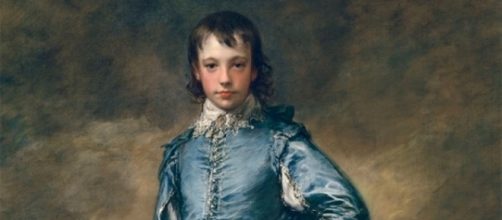A giant art project is occurring at the Huntington Museum in San Marino, CA – the repair of a deteriorating “The Blue Boy,” Thomas Gainsborough’s portrait of a youth dressed in a blue satin doublet and breeches. The likeness is probably as famous as the “Mona Lisa.” But while three centuries younger than Da Vinci’s portrait, the edges are worn and the pigment is flaking, and it is held in place only by countless coats of varnish that are yellowing the colors.
Some back story
How, you might ask, did an 18th century British superstar’s painting, once dubbed by the New York Times “the world’s most beautiful picture,” end up in San Marino, California?
Follow the money. In 1921, American railroad magnate Henry Huntington bought it from Duke of Westminster for $728,000 – at the time the highest ever paid for a painting.
Fixing a famous painting that is falling apart
Christine O’Connell, chief conservator of painting at the Huntington, will do some of the repairs in front of visitors to the museum’s Portrait Gallery. Is she nervous? “I’ve worked on paintings in worse condition that this,” she told The Atlantic magazine, even including pictures that came to her in pieces. Besides, she thinks what she’ll be doing will bore people. “I’m taking my tiny, tiny brush and adding material to microscopic areas of peeling and cracking.” If she does it right, she said that no one will notice what she did.
Painting portraits was Gainsborough’s least favorite subject
Historians have recently decided that the boy in the painting is the artist’s nephew, and helper ,Dupont. O’Connell hopes to gain more knowledge about the work, “If we can learn more about that painting, we may uncover some fascinating anecdote about Gainsborough’s life or studio practice.”
One wonders if she will notice the artist’s own words written in a letter in 1768, and reported in 1829 by historian Allan Cunningham in “The Lives of the Most Eminent Painters, Sculptors and Architects.” Gainsborough penned this: “I’m sick of portraits.
“ And he went on to speak longingly of walking off to some “sweet village” where he could paint landscapes in quiet. His feeling about painting people is particularly unexpected since he was such a popular portraitist and on a par with Sir Joshua Reynolds.
Supporting the family kept him down on the farm
Again in his own words in letters, Gainsborough said he felt compelled to paint portraits because of family obligations.
He spoke of his daughters, for example, with what he called their constant tea parties and husband-hunting: “They will job me out of the lost ten years,” he complained, adding that he could say nothing. “I must jog on and be content. I hate being confined in harness.”
As for painting portraits, despite his reputation as a master of the genre, he failed in one instance when he attempted to picture the Duchess of Devonshire. Apparently she was too beautiful to capture on canvas. As he put it, “Her grace is too hard for me.”


